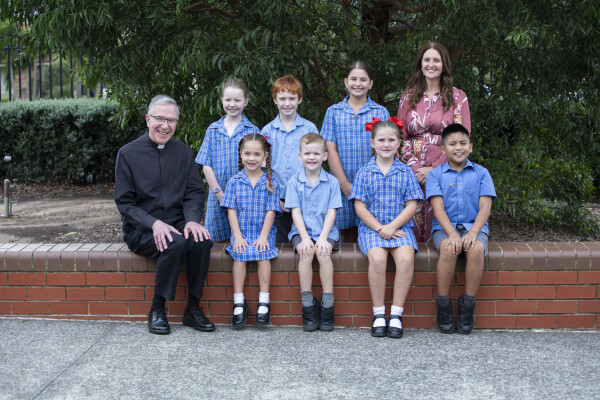
St Paul's
Albion Park
Albion Park
A Catholic Parish Primary School
 RELIGIOUS EDUCATION CURRICULUM
RELIGIOUS EDUCATION CURRICULUMThe formation of Christian values underpins all that we do at St Paul's, and students also experience formal Religious Education lessons each day based upon the K-12 Religious Education curriculum of the Diocese of Wollongong.
Religious Education (RE) is one of our Key Learning Areas. The RE curriculum is set by the Bishop of Wollongong in conjunction with Catholic Education Diocese of Wollongong.
The Emmaus Story (Luke 24:13-35) is central to the Religious Education curriculum. The curriculum is based on the four movements of the Emmaus story.
The Religious Education curriculum aims to assist students to reflect upon, make sense of, celebrate and live more deeply the mystery of Christ. Relationship with God is nurtured through catechesis, prayer and ritual enabling/supporting students to contribute positively to the community and culture. The content strands and themes of learning aim to lead students towards love of God, love for others and for all of creation as they become open to the presence and activity of God in their lives.
Explicitly for RE, the teaching and learning process should incorporate storytelling and creative arts, and foster the development of the four cognitive processes of Religious Literacy:
One of the aims of Religious Education (RE) in our Catholic schools is to develop our students' ‘Religious Literacy’ – that is, the way children use their literacy skills to communicate their understanding of the religious tradition to themselves, their peers, teachers and members of the wider faith community.
“By the end of their schooling students know the core teachings of our faith, our Scriptures, history and tradition and how these are to be lived in the world" — Catholic Schools at a Crossroad (2007)
The Religious Literacy Assessment program in the Diocese of Wollongong provides information about the way children process and express their religious knowledge. The assessment involves all Year 4 students across the diocese and consists of a multiple choice paper, focusing on the students' knowledge and understanding of the key concepts that are taught throughout their Religious Education from Kindergarten to Year 4, and what this means for the way we live, as it is applied in society.
The tasks are developed around the Religious Literacy Framework of Knowing the Tradition, Working with the Tradition, Applying the Tradition and Valuing the Tradition, reflecting Stage 1 and Stage 2 outcomes of the RE curriculum. The data gathered from the assessment is analysed to inform learning and teaching in schools, to focus on professional learning and to recognise and celebrate learning in the domain of Religious Education in the Wollongong Diocese.
At St Paul’s, the sacramental programs are run as parish-based programs. The parish has a sacramental coordinator and sacramental team that run these programs. Any questions regarding sacramental programs need to be made through the Parish Office or by email to office@stpaulsparish.org.au.
Each year, Catholic Education Diocese of Wollongong invites Catholic primary schools from across the diocese to submit artworks from Year 5 and 6 students to enter in the CEDoW Christmas Story Art Exhibition and Competition.
Approximately 50 entries that are deemed to best meet the criteria are chosen for an exhibition at the Wollongong City Art Gallery, which is open to the public commonly around the month of October each year. Major awards are given at the opening of the exhibition, and approximately 12 finalists are selected for entry into the Sydney Archdiocese Christmas Story Art Exhibition and Competition.
For more information, visit the CEDoW Christmas Story Art Exhibition and Competition site
Each year, Year 6 students from across the Diocese of Wollongong gather together to celebrate in an uplifting Mass with the Bishop of Wollongong. This occasion is an opportunity for students to encounter Christ through the Eucharist, through their fellow students gathered together and through the presence of Bishop Brian Mascord. The Year 6 Mass also aims to help students understand their place in the diocese, being part of the broader Church community and how they might embrace their Catholic faith as they take their next steps into secondary school.